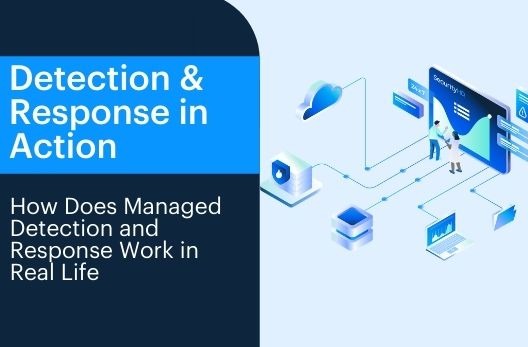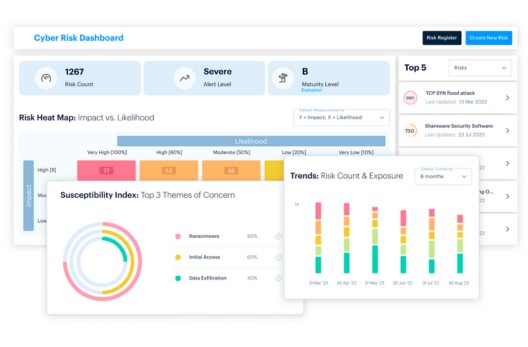Notes from the Field • 6 MIN READ
Red and Blue Cyber Teams – A Tactical Arena!
by Reza Razmi, Eleanor Barlow • Oct 2023
Within cyber security, there are many different types of teams that work together to make sure they can deliver the highest possible security measures based on the resources and budget they have. Among them, there are Red and Blue Teams, which we call Red Teamers & Blue Teamers. Both teams require different sets of thinking and approach and, together, make a formidable unit.
What is the Purpose of a Red Team?
If you think of a cyber security team as the soldiers on a tactical and intellectual battleground, safeguarding their kingdom (business/data/processes/networks), here the red team members would be the ones providing the cunning strategies, seeking out all vulnerabilities, and providing schemes to detect weaknesses in systems.
The objective of a Red Team Assessment is to simulate real-life attacks, to know that the right security controls are implemented and working, and to highlight security gaps and to understand a business’s systems, networks, and risk level.
Determination is key for a Red Teamer, they can fail repeatedly until they find the method to exploit the vulnerability, and this takes persistence. To be a good Red Teamer they must try and think the same way as an attacker would. They must often try the same thing repeatedly, editing the techniques and tactics and refining them over time. The only difference between them and a bad actor is that they use their knowledge for a good cause. They share all the findings with the Blue Teamers to make sure all the findings are taken care of the respective company.
The Combined Force
In cyber security there’s no solo working. You can only protect the company you are presenting when working as a team. You can hire a great Red Teamer, but the value comes when he/she can share the finding and recommendation with the rest of the team members. The cyber security industry found this a while ago and that’s why there are some unique CVE databases helping businesses know about the new vulnerabilities and the steps to remediate. The point here, is that there won’t be any survival if we are not working as a team.
Think about a small accounting business. They will have a lot of dependencies to other businesses, maintaining and updating their website, software, and hardware they use. Supply chain attack comes from 3dr party partners, and you have little to zero control on this. That’s why it’s important to share knowledge globally, making sure to choose and work with the right partners and service providers.
What is the Purpose of a Blue Team?
On the same “battlefield”, the Blue team members act as the defense line, to patch issues and to arm your business with the right security measures that provide and strengthen the barrier between you and the threats trying to hammer their way in. The Blue Teamers are the guards protecting the kingdom. They must keep an eye on every single way/method an outsider could gain unauthorized access to their territory and monitor all activities from both outside and inside.
The Blue team knows every corner of the kingdom that they’re protecting. They know about the weak spots better than anyone else. Like a real battlefield, you put more guards or protection where is most vulnerable and they build the strategy based on all the information they have. The same story applies to Cyber Security. The blue team knows about the network design and architecture of their network. They know about old legacy software that can’t be upgraded or the ones they don’t have the budget to upgrade. They must come up with a solution to protect their company with whatever they have. They have to be creative and, in some cases, use traps like honey pots or honey nets to distract attackers, to learn about the tools or techniques they use, or even buy some time to react.
Defensive and Offensive Security Combined
Together, Red, and Blue, team members provide a culture of camaraderie, resilience, and continual improvement, within the cyber security team. All members from both teams must work together, to outwit and protect their assets from the growing cyber threats. Only by utilizing both teams, and with them both mindsets and strategies, that a business will gain a true understanding of their security posture.
Like a sports team, you need to have a mix of players with an attacking and defending mindset. Your team will be recognized when each of these groups play their role. You can’t replace a defender with an attacker, or vice versa. A business works the same way. Teams should work together closely to identify and mitigate risks, and to protect business from possible threats. Red Teamers should actively work on the new threats and vulnerabilities, and test if those are applicable to their company. Then they must pass their findings to the Blue Teamers to mitigate, protect or plan to reduce the attack surface.
‘Most security is built on the architecture of perimeter security. Imagine a castle, with a moat, surrounded by high walls and defences. In the IT world, these walls are your firewalls, your IDS, IPS, AV and alike. Now imagine you are sitting in this castle looking over the walls, towards the dark woods and beyond. What if you could go out there and observe your attackers and threats, hidden in the undergrowth? What if you could set up listening stations, traps, and decoys, to gather your own intelligence on cyber threats, and find out if they had any intelligence on you? In cyber security, we call this Threat Intelligence.’ – Feras Tappuni, CEO, SecurityHQ
Next Steps to Enhance Security Measures
- Red Team Assessment
In SecurityHQ’s Red Team Assessment, our Security Experts mimic the behavior of an internal employee, with the same devices and privileges, with malicious intentions to gain unauthorized access to sensitive IT systems, active directory, business sensitive application/database. From this, they learn which machines, servers and data can be reached, and if an attack can be made on the machine to move laterally throughout the organisation.
- Threat & Risk Intelligence
SecurityHQ’s Threat & Risk Intelligence (TRI) service involves the analysis of data, to identify threat actors and vectors targeting business. It maps your digital footprints with attack tactics to understand the surface exposure from a hacker’s point of view. View, monitor, prioritise and analyze all digital elements of your organisation, including Internet, applications, systems, cloud, and hardware. Harvest information from the Dark Web, Deep Web, and public domain for complete visibility.
- Penetration Testing
Penetration testing involves simulating an attack on your network surface to identify security loopholes. Hunt for, and highlight, vulnerabilities in your network by emulating real-life external and internal attacks. Testing conducted in a controlled environment, without compromising routine business activities.
Get in Contact
If you want to enhance your cyber security posture, learn more about Red or Blue team activities, then fill out this form, and our security experts will get back to you.












